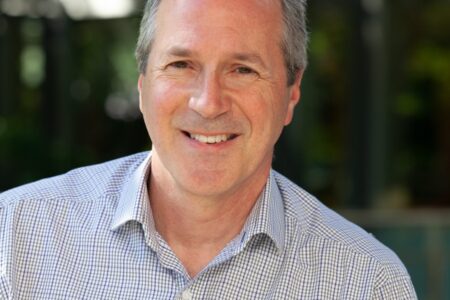Nuclear not necessary
By Michael Jessen
As the nuclear nightmare heats up in Japan, a question comes to mind. The question is not: Is nuclear power safe? Rather the question is: Is nuclear power necessary?
The crippled nuclear reactors in Japan that could not withstand the double whammy of a 9.0 earthquake and a tsunami will hopefully signal the death knell of the nuclear industry.
Just when nuclear power plant salesmen were making a comeback from the twin calamities of Chernobyl in 1986 and Three Mile Island in 1979, this most recent catastrophe should make us all question the continued use of this source of power.
Nuclear supporters tout nukes because they can generate massive amounts of electricity without producing any greenhouse gases. Hence, say the nuclear cheerleaders, the plants are viable alternatives to our fossil fuel addiction.
Even in the wake of Japan’s cataclysm, nuclear proponents still feel the power source is safe as long as someone makes the right decisions about where the plants are located, how they are designed, and who is chosen to operate them. It seems to me that there is quite a lot of risk encompassed in those decisions. Bob McDonald – the CBC science guru – says nuclear is remarkably safe, that the troubled reactors were an old design, and that they were shortly going to be decommissioned after 40 years of operation. Other Japanese reactors, of a more modern design, withstood the quake and will be operating properly in short order, said McDonald.
Events heading toward a bad ending
In the six boiling water reactors at the Fukushima Daiichi facility, water – heated by splitting uranium atoms – turns to steam and drives turbine-generators to make electricity. Steam condenses back to water and is pumped back into the reactor to continue the cycle.
Metal cladding encases the uranium fuel roads in the reactor and multiple barriers in the containment building are supposed to prevent release of radiation. Above 1,200 degrees Celsius, fuel-rod cladding melts, releasing radioactive isotopes of caesium and iodine into the containment building.
If the containment fails, radiation escapes into the environment. Events at the Fukushima Daiichi facility appear to be heading toward a bad ending as I write this column.
Energy choices facing the world
Before and after the Arab oil embargo of 1973, Amory Lovins – an American consulting physicist with an M.A. from Oxford – was thinking about energy policy. In 1976, he published an article in Foreign Policy entitled Energy Strategy: The Road Not Taken? in which he outlined the energy choices facing the world.
We could go along the unlimited growth “hard path” – with increasing reliance on nuclear and dirty coal – which was being forecast at the time by U.S. electric utilities or a “soft path” which focused on efficiency and renewable sources of energy.
In 1972, the U.S. Department of the Interior projected that Americans would use 191.9 quads of energy in the year 2000. In reality, Americans used 98.98 quads of energy in 2000. In 1976, Lovins also predicted U.S. energy use in 2000 and he missed nailing it by four per cent.
Lovins feels energy should be scaled to meet local needs. Thirty years ago, he famously described nuclear power this way: “Using nuclear power to boil water is like using a chainsaw to cut butter.”
His 2002 book Small is Profitable (www.smallisprofitable.org) describes 207 ways in which the size of “electrical resources” – devices that make, save, or store electricity – affects their economic value. It finds that properly considering the economic benefits of “distributed” (decentralized) electrical resources typically raises their value by a large factor, often approximately tenfold, by improving system planning, utility construction and operation, and service quality, and by avoiding societal costs.
According to the World Nuclear Association, 16 per cent of the world’s electricity comes from nuclear power. In addition, more than 150 naval vessels have been built to use nuclear propulsion.
In 2004, Lovins wrote the Pentagon-cosponsored book Winning the Oil Endgame (www.oilendgame.com), a roadmap for eliminating U.S. oil use by the 2040s, led by business for profit.
Is nuclear necessary?
So we’re back to the question: Is nuclear necessary? In my opinion, the answer is an unequivocal NO! Here are some sources to back that up:
In 1996, the Renewable Energy Policy Project released The Environmental Imperative, a plan for the energy market to draw on renewable energy to avoid the severe environmental impacts of the fossil fuel cycle. This plan outlines the environmental imperative for accelerating the use of renewable resources.
A report by the European Renewable Energy Council and Greenpeace International predicts a new Canadian energy strategy could eliminate entirely the need for fossil fuels – including that from oil sands – as well nuclear.
The study, released in September 2010, demonstrates that “the global technical potential for renewable energy can supply about six times more power than the world currently consumes – forever.”
At the end of September 2010, the Danish Commission on Climate Change Policy issued its Green Energy report, concluding Denmark’s energy system could be fossil fuel free by 2050.
A January 2011 study said the world’s energy supplies can be converted to clean and sustainable sources with today’s technology at costs roughly comparable to conventional energy. Co-authored by Stanford University researcher Mark Jacobson and Mark Delucchi, of the University of California-Davis, the two-part paper in Energy Policy says such a move would save 2.5 million to three million lives a year and simultaneously halt global warming, reduce air and water pollution and develop secure, reliable energy sources.
The world they envision would run largely on electricity. Their plan calls for using wind, water and solar energy to generate power, with wind and solar power contributing 90 per cent of the needed energy. Geothermal and hydroelectric sources would each contribute about four per cent in their plan (70 per cent of the hydroelectric is already in place), with the remaining two per cent from wave and tidal power.
Vehicles, ships and trains would be powered by electricity and hydrogen fuel cells. Aircraft would run on liquid hydrogen. Homes would be cooled and warmed with electric heaters – no more natural gas or coal – and water would be preheated by the sun.
Commercial processes would be powered by electricity and hydrogen. In all cases, the hydrogen would be produced from electricity. Thus, wind, water and sun would power the world.
Energy use and efficiency
A report from the United Kingdom’s Centre for Alternative Technology envisions a zero carbon Britain free of fossil fuels by 2030. The report proposes that energy demand can be decreased by over 50 per cent without any decrease in services.
The American Council for an Energy-Efficient Economy believes 87 per cent of the energy we use is wasted and has produced a number of reports indicating how we can realize potential electricity efficiency savings and create new, local jobs.
The U.S. National Academy of Science’s “America’s Energy Future Project,” has identified some half trillion dollars of energy efficiency investments with average paybacks shorter than three years and David Goldstein, Energy Program Co-Director for the Natural Resources Defense Council, details how this half trillion is merely the tip of the iceberg in his book Invisible Energy: Strategies to Rescue the Economy and Save the Planet.
Every 70 minutes or so, the sun supplies the Earth with enough energy to run global civilization for a year, says Amory Lovins of the Rocky Mountain Institute.
Researchers at Stanford University’s Global Climate and Energy Project recently did an evaluation of the global potential of wind power, using five years of data from the US National Climatic Data Center and the Forecasts Systems Laboratory. They estimated that the world’s wind resources could generate more than enough power to satisfy total global energy demand.
According to an assessment done by a Massachusetts Institute of Technology-led interdisciplinary panel, the deep geothermal resource base in the United States – accessed through so-called enhanced geothermal systems – is more than 13 million exajoules. The study “estimated the extractable portion to exceed 200,000 EJ or about 2,000 times the annual consumption of primary energy in the U.S. in 2005.”
Putting it all together
It is clear that a combination of energy efficiency, and solar, wind, geothermal, biomass, and tidal power can replace the electricity the world’s gets from nuclear power.
Learning how to split the atom ended a war. Nuclear power plants were perhaps the human answer to find a peaceful use for this discovery. But today many countries want a nuclear power plant for different reasons. A 1,000-megawatt nuclear reactor manufactures 500 pounds of plutonium a year; normally 10 pounds of plutonium is fuel for a terrorist atomic bomb.
Nuclear power is exorbitantly expensive and notoriously unreliable, says Helen Caldicott. It is also neither safe nor necessary.
Making rational energy decisions in our daily lives must become the norm for each of us. We must find ways to reduce our personal energy use and eliminate our wasteful habits. Efficiency and renewable sources of energy can satisfy our needs, but not our waste and greed.
Events in Japan have put us at the same crossroads that Amory Lovins described in 1976. The soft path beckons to us once again.
Resources
A world changing interview with Amory Lovins is at http://www.worldchanging.com/archives/009560.html
The 1996 paper The Environmental Imperative: A Driving Force in the Development and Deployment of Renewable Energy Technologies is available at http://www.repp.org/repp_pubs/pdf/issuebr1.pdf
A Path to Sustainable Energy by 2030, by Mark Jacobson and Mark Delucchi, from the November 2009 Scientific American, is available at http://www.stanford.edu/group/efmh/jacobson/Articles/I/sad1109Jaco5p.indd.pdf
Energy [r]evolution: A Sustainable Energy Outlook for Canada, by the European Renewable Energy Council and Greenpeace, is available at http://www.greenpeace.org/canada/Global/canada/report/2010/9/E%5BR%5Dcanada.pdf


























Comments